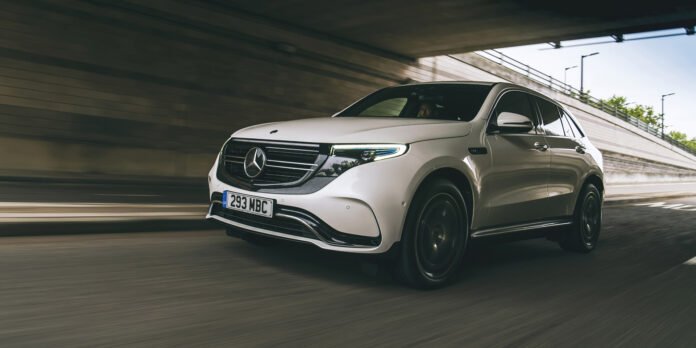Guaranteed Asset Protection insurance, or GAP for short, has its own little dictionary of terminology that can catch buyers out if they’re not careful.
There are several different types of GAP insurance, and the right type of GAP for your will depend on how you have funded your car, whether it’s new or used and how much you want to spend on a policy.
When looking at your options, there may also be various terms mentioned that you haven’t heard of or don’t fully understand. So in conjunction with our GAP insurance partner, ALA Insurance, we’ve compiled this list of typical terminology you might need to understand when considering what sort of GAP policy is right for you.
Special offer for our readers: Save 10% on GAP insurance from ALA Insurance
Agreed Value GAP
This type of GAP cover may be suitable if you bought your car privately rather than from a dealer. It covers you for the difference between your insurance payout and the value of the car (based on an industry standard like Glass’s) when you took out the policy.
Depending on the GAP insurance provider, you can often take out this type of GAP policy any time after purchasing the vehicle, rather than being limited to within a few weeks or months of purchase. The value used for determining the level of cover is the date you take out the policy rather than the date you bought the car.
Asset
Asset is the ‘A’ in GAP. It simply refers to the product you’re insuring. That can be a car, a van, a motorcycle or other type vehicle.
Contract Hire GAP
This kind of GAP is available for leased or contract hire vehicles, as opposed to a car you own outright or are funding on a purchase-based car finance agreement like a PCP.
If your car is stolen or written off (known as a total loss; see below), this covers you for the difference between your car insurance payout and your remaining rental payments to the leasing company.
- You may also like: Personal Contract Hire (PCH) explained
Depreciation
Depreciation plays a crucial role in the consideration of GAP insurance. As soon as you drive your vehicle off the dealer’s forecourt, your car suffers a significant drop in value and it will continue to fall each day from then on.
Most car insurance policies only pay out market value (see below). That means that if your car gets written off or stolen, your car insurance provider will be giving you a cheque for an amount that is much less than what you paid for the car – even if it was only a matter of months ago that you boought it.
- You may also like: Depreciation – Why do new cars lose so much money?
FCA
The Financial Conduct Authority (FCA) is the regulatory body in the UK that looks to protect consumers from market sharks.
In 2015, the FCA introduced rules to prevent car dealers pressuring consumers into buying something they don’t understand or have never heard of. As a result, there’s now a mandatory two-day waiting period between a dealership selling the car and being able to sell GAP insurance.
- You may also like: Dealer vs online – where’s best to buy GAP insurance?
Finance GAP
Finance GAP is equivalent to Contract Hire GAP (see above) but for a car funded via a purchase agreement like a PCP, HP or conditional sale.
This kind of policy pays out the difference between what your car insurance has paid you and the outstanding amount left on your finance agreement.
This can be critically important if your debt to the finance company is significantly greater than the total loss value of your vehicle, which is very common on PCP car finance agreements.
GAP insurance
GAP stands for Guaranteed Assest Protection. It’s an insurance product that is separate from your regular comprehensive car insuraance. This type of insurance covers your vehicle for a designated level of cover over and above the total loss value (see below) of your vehicle if it is stolen or written off.
As shown on this page, there are several different types of GAP insurance products that offer different levels of cover to suit different circumstances.
- You may also like: What is GAP insurance and should you have it?
Market value
Market value is the insurance company’s assessment of what your car is worth right now, which is almost certainly a lot less than what you paid for the car in the first place. For example, if you bought a new car two years ago, its market value today is probably only about half of what you paid for it.
Most car insurance policies pay you market value if your car is stolen or written off. That means that getting another new or near-new car becomes very expensive, even if you don’t have additional debt on the vehicle.
PCP
The Personal Contract Purchase (PCP) is the most common way for private customers to finance a new car, and is increasingly popular for used car purchases as well.
Unfortunately, the low payments provided by PCP finance tend to mean that you have far more debt than you’re paying back each month. This is called negative equity and becomes a real problem if your car is stolen or written off.
If your car is declared a total loss (see below) and you have a PCP finance agreement, the money paid out by your regular car insurance usually won’t be enough to cover the outstanding finance. This is where Finance GAP insurance (see above) comes in to save the day.
You may also like: Personal Contract Purchase (PCP) explained
Replacement GAP
This kind of GAP covers the cost to replace your written-off vehicle with a suitable equivalent (make, model and specification, age, mileage, etc) of the same car.
This takes into consideration any change in price of the same car over time. New car prices have been creeping up in recent years, which means the price you paid a couple of years ago may not cover the price for an equivalent car today.
Return to Invoice
This is one of the most popular types of GAP insurance. It means the insurer will cover you for the price between what you paid for the car originally and your market value insurance payout – essentially, the ‘gap’.
Bear in mind that such insurance doesn’t cover on-road costs beyond the price of the car, like registration, fuel or road tax. What’s more, a contribution, albeit small, is made towards the excess on your regular insurance claim.
Top-Up GAP
This kind of GAP insurance is available on cars up to eight years old and can top up a regular insurance payout by another 25%. Similar to Replacement GAP, it can put you in a position to get another set of wheels.
Total Loss
This is the only status GAP insurance covers. If a car is damaged but repairable, your regular insurance company needs to be contacted. However, if your company decides the damage isn’t worth fixing and the car becomes a write-off, then you can contact your GAP insurer and put in motion the wheels of clawing back some of the cash you owe.
More GAP insurance information
- More GAP insurance advice at The Car Expert
- Special offer: Save 10% on GAP insurance from ALA Insurance
This article was originally published in March 2021, and was most recently updated in June 2022.











